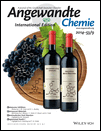Programmed Death-1: Therapeutic Success after More than 100 Years of Cancer Immunotherapy†
A.D. thanks the National Institute of Health (1R01GM09708201), Innovative Medicines Initiative (IMI) and the Qatar National Research Foundation (NPRP6-065-3-012) for funding. T.A.H. is funded by a Marie Curie FP7-Reintegration-Grant within the 7th EC Framework Programme and by a Project operated within the Foundation for Polish Science TEAM Programme, cofinanced by the EU European Regional Development Fund.
Graphical Abstract
No other cancer therapy target class caused more excitement than the programmed death-1 (PD-1) pathway related. Antibodies against PD-1 and PD-1 ligands represent a therapeutic breakthrough and are the first examples of broadly efficacious and durable cancer immunotherapies. Cancer for the first time seems to have transformed from an often incurable to a “clinically manageable” disease.





